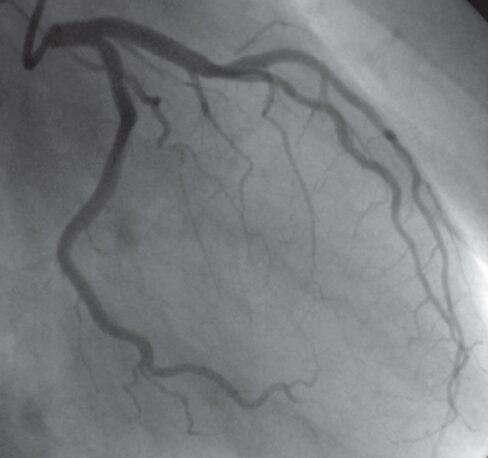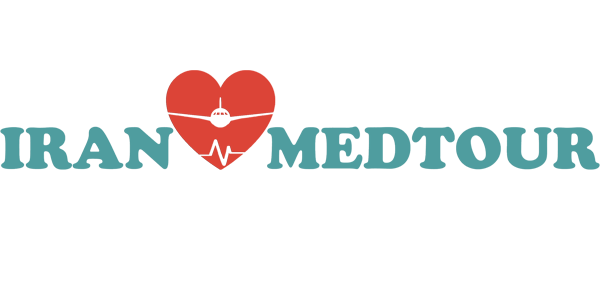Angiography
Angiography in Iran
Angiography (arteriography) is one of the services of iranMedtour, which is provided by the best cardiac surgeons, along with accommodation, translator, companion nurse, and city tour at an affordable price in Iran.
What is a coronary angiography?
Coronary angiography is a test to find out if you have a blockage in a coronary artery. Your doctor will be concerned that you’re at risk of a heart attack if you have unstable angina, atypical chest pain, aortic stenosis, or unexplained heart failure.
During the heart angiography, a contrast dye will be injected into your arteries through a catheter (thin, plastic tube), while your doctor watches how blood flows through your heart on an X-ray screen to determine the exact location of the blockage. With the help of angiography, the number of blocked coronary arteries, the location of the blockage, and the extent of blockage are determined.


Why angiography is needed?
Heart Angiography can show if your coronary arteries are narrowed, where they are narrowed, and by how much. It can help your doctor to advise proper treatment such as medicines, angioplasty, or coronary artery bypass surgery. The risk of heart attack can be detected by angiography which resulted in lowering the rate of death due to heart problems.
Preparing for arteriography
The preparations before angiography are completely dependent on the specialist’s pieces of advice. Generally, there is no need to perform any special preparation for angiography. Just doctor ask patients not to eat or drink anything for eight hours before the angiography and to check into the hospital the morning of the test. The nurses will take your blood pressure, start an intravenous line and, if you have diabetes, check your blood sugar. You may also have to undergo a blood test and an electrocardiogram. Doctors sometimes use an MRI or a CT scan before a coronary angiography test, to pinpoint problems with your heart.
Coronary Artery Angiography (Cardiac Catheterization)
A coronary artery angiography (cardiac catheterization) procedure to identify a blood clot within an artery, is depicted. The procedure involves threading a catheter through the femoral artery to the left coronary artery and injecting dye into the artery, which allows for the clot to be seen on an x-ray image.
After
Heart Angiography is very safe when performed by an experienced team and there is no risk for patients. Bleeding or bruising is very normal in the area the tube was entered – generally the hip – and they will vanish after some days. There is no need to hospitalize after angiography but if specialist advice; you have to stay at the hospital for one night. You’ll need to see the doctor a week after the test to be informed about the result of the test and the required treatments.
What is the average cost of an angiogram?
Almost all general and private hospitals in Iran have the technology of performing Angiography. So, specialists can easily manage to do angiography for all patients in the hospitals they can afford or their insurance covers. The minimum cost of Angiography in Iran is about 500 $ in Hospitals such as Pastorino up to 1200$ in private hospitals like Khatamolanbia and Kian. However, the average cost of Angiography in the Middle East or other Asian countries is about $1,500 while it can increase to 2000 $ in the USA.
If you would like the best cardiologists in Iran’s first-class hospitals to perform your surgery, and at the same time be comfortable and stress-free during your treatment and stay in Iran at a reasonable cost, like your home, take a look at the IranMedtour Angiography package. 😊
Angiography in Iran
Angiography (arteriography) is one of the services of iranMedtour, which is provided by the best cardiac surgeons, along with accommodation, translator, companion nurse, and city tour at an affordable price in Iran.
What is a coronary angiography?
Coronary angiography is a test to find out if you have a blockage in a coronary artery. Your doctor will be concerned that you’re at risk of a heart attack if you have unstable angina, atypical chest pain, aortic stenosis, or unexplained heart failure.
During the heart angiography, a contrast dye will be injected into your arteries through a catheter (thin, plastic tube), while your doctor watches how blood flows through your heart on an X-ray screen to determine the exact location of the blockage. With the help of angiography, the number of blocked coronary arteries, the location of the blockage, and the extent of blockage are determined.


Why angiography is needed?
Heart Angiography can show if your coronary arteries are narrowed, where they are narrowed, and by how much. It can help your doctor to advise proper treatment such as medicines, angioplasty, or coronary artery bypass surgery. The risk of heart attack can be detected by angiography which resulted in lowering the rate of death due to heart problems.
Preparing for arteriography
The preparations before angiography are completely dependent on the specialist’s pieces of advice. Generally, there is no need to perform any special preparation for angiography. Just doctor ask patients not to eat or drink anything for eight hours before the angiography and to check into the hospital the morning of the test. The nurses will take your blood pressure, start an intravenous line and, if you have diabetes, check your blood sugar. You may also have to undergo a blood test and an electrocardiogram. Doctors sometimes use an MRI or a CT scan before a coronary angiography test, to pinpoint problems with your heart.
Coronary Artery Angiography (Cardiac Catheterization)
A coronary artery angiography (cardiac catheterization) procedure to identify a blood clot within an artery, is depicted. The procedure involves threading a catheter through the femoral artery to the left coronary artery and injecting dye into the artery, which allows for the clot to be seen on an x-ray image.
After
Heart Angiography is very safe when performed by an experienced team and there is no risk for patients. Bleeding or bruising is very normal in the area the tube was entered – generally the hip – and they will vanish after some days. There is no need to hospitalize after angiography but if specialist advice; you have to stay at the hospital for one night. You’ll need to see the doctor a week after the test to be informed about the result of the test and the required treatments.
What is the average cost of an angiogram?
Almost all general and private hospitals in Iran have the technology of performing Angiography. So, specialists can easily manage to do angiography for all patients in the hospitals they can afford or their insurance covers. The minimum cost of Angiography in Iran is about 500 $ in Hospitals such as Pastorino up to 1200$ in private hospitals like Khatamolanbia and Kian. However, the average cost of Angiography in the Middle East or other Asian countries is about $1,500 while it can increase to 2000 $ in the USA.
If you would like the best cardiologists in Iran’s first-class hospitals to perform your surgery, and at the same time be comfortable and stress-free during your treatment and stay in Iran at a reasonable cost, like your home, take a look at the IranMedtour Angiography package. 😊



